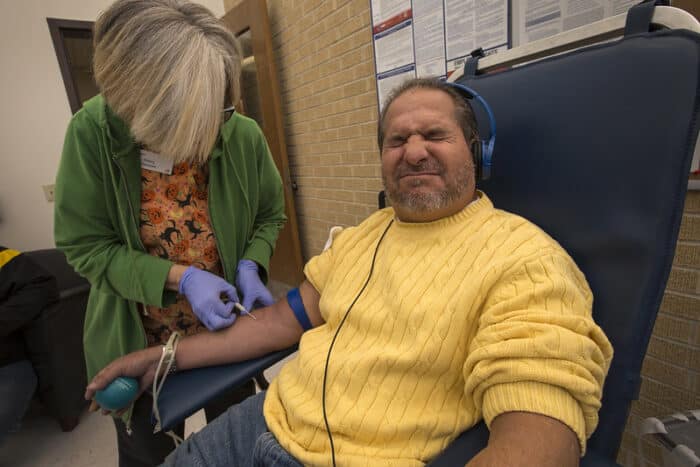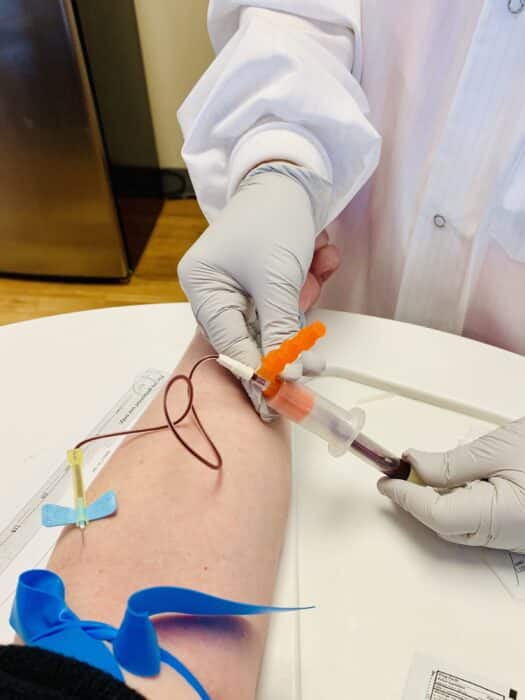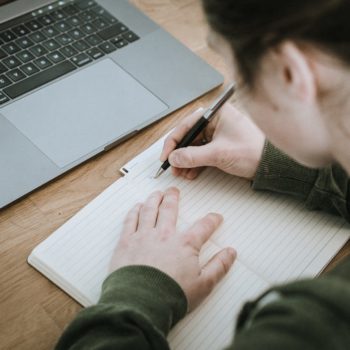If you want to pursue phlebotomy as your career, you might want to know what exactly they do, what their main roles and responsibilities are, and what their key tasks are in a day.
Don’t worry, we’re here to help you discover just that, and more.
Phlebotomists are the underrated champions of the healthcare system.
If you’re new to this career, you might be wondering if phlebotomy is the only responsibility of a phlebotomist, as the name suggests.
Let’s find out.
Read: What is a Phlebotomist

Do You Want To Become a Phlebotomist? Check Out Free Phlebotomist Masterclass!
In our masterclass you learn:
- How to be a Phlebotomist faster…in just 2 months!
- Avoid student debt & driving to classes
- #1 thing employers want from Phlebotomists
- How to stand-apart & get a university certificate for a strong resume
What is the Main Responsibility of a Phlebotomist?
If you think that phlebotomy is the only responsibility of a phlebotomist, we want you to know that that’s not all.
Yes, phlebotomy, or drawing blood, is one of the main responsibilities of a phlebotomist, and they need to master the skills of venipuncture.
But, they also have additional responsibilities to fulfill within a working day.
Let us take a look.
See: Which Two Skills are Important for a Phlebotomist?
Other Top Responsibilities of a Phlebotomist
Apart from phlebotomy, the key roles of a phlebotomist in a day-to-day schedule are:
- Patient Interaction: Explain procedures and ensure patient comfort during blood collection.
- Sample Labeling: Accurately label and document collected blood samples.
- Specimen Processing: Prepare and package samples for analysis in the laboratory.
- Infection Control: Maintain a clean and safe environment to prevent infections.
- Equipment Care: Clean and maintain phlebotomy equipment for safe use.
- Record Keeping: Document procedures, patient details, and samples collected.
- Quality Control: Follow measures to ensure accurate samples and reliable test results.
- Assist Healthcare Professionals: Collect blood samples for medical tests, assisting other professionals.
- Patient Education: Educate patients on fasting or preparation needed before blood collection.
- Emergency Response: Collect blood samples efficiently in critical situations.
- Inventory Management: Keep track of supplies and orders as needed.
- Regulation Compliance: Follow healthcare guidelines and safety protocols.
- Continuous Learning: Stay updated on techniques, safety, and industry developments.
Also see: How to Become a Phlebotomist
Conclusion
In conclusion, the main responsibility of a phlebotomist is to skillfully collect blood samples from patients, ensuring their comfort and safety throughout the process.
This crucial role not only aids in diagnosis and treatment but also plays a significant part in patient care and overall healthcare quality.
Related Resources:
- Phlebotomist Salary
- Phlebotomist Skills
- Ultimate Phlebotomist Resume Guide – Phlebotomy Job
- Can A Phlebotomist Start IVs?
- Phlebotomist Duties
- What Do You Need To Be a Phlebotomist?
- Phlebotomist Degree
- Pros and Cons of Being a Phlebotomist
- Mobile Phlebotomist
- How To Get a Phlebotomy Certification
- What are the Different Types of Phlebotomy Certifications?
- Phlebotomist vs CNA
- Is a Phlebotomist a Nurse?
- Phlebotomist Education
- Cardio-Phlebotomy Technician
- Phlebotomy Internship
- Phlebotomy Interview Questions
- 4-Week Phlebotomy Classes Online
Related Articles
-
How to Be Successful in College in 2022 – 7 Simple Tips to Succeed
-
How Do Scholarships Work? Read This First…Truth is Shocking
-
7 Best College Majors 2024: What Should I Major In?
-
How to Choose a College – 10 Things You Must Consider in 2024
-
Why Go to College? Top 13 Benefits for Adult Students in 2022
-
Top 5 Best Alternatives to Community College for 2024






